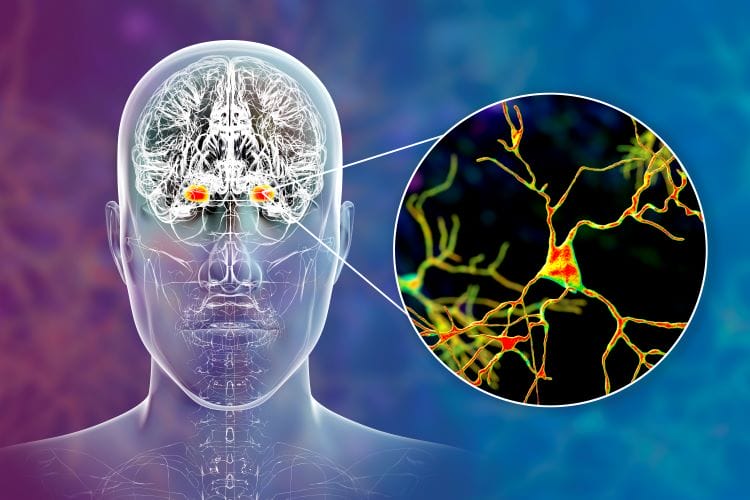December 20, 2023
When a patient complains about burning, dryness, and ocular pain, we often expect to see clinical signs that correlate. However, what happens when a patient has significant subjective complaints but the eye looks clinically normal? When patient symptoms outweigh the clinical signs, corneal neuropathic pain should be on your differential diagnosis.
Corneal neuropathic pain (CNP) results from dysfunctional nerves that cause sensations of burning, stinging, eye ache, and pain.1 Risk factors for CNP can be anything that disrupts normal nerve function. These include damage to nerves during cataract or refractive surgery, ocular surface diseases such as chronic dry eye disease, recurrent corneal erosions, corneal infections such as herpes simplex and zoster, eye drops containing BAK, chemical burns, systemic neuropathic conditions such as diabetes, radiation keratopathy, multiple sclerosis, and chemotherapy.2,3
CNP is more prevalent in people with neurological or psychiatric problems, including anxiety, depression, chronic migraines, headaches, fibromyalgia, and autoimmune disease.2,3
The presence of inflammation can make corneal nerves more sensitive over time, which is called sensitization. This can cause these nerves to fire on their own, giving rise to symptoms of allodynia (pain due to a stimulus that does not usually provoke pain) or hyperalgesia (increased pain from a stimulus that usually provokes pain). Allodynia and hyperalgesia (i.e. sensitivity to light and wind) are prominent symptoms in patients with CNP.
Peripheral sensitization is the acclimation of the peripheral pain system to recurrent injurious stimuli. Enduring damage and inflammation results in transition from acute nociceptive pain to chronic neuropathic pain. 4,5 In the spinal cord, persistent inflammation and nerve damage also act post-synaptically to cause direct depolarization along the central pain pathway in addition to modulation at the level of nociceptors in the presynaptic trigeminal nerve endings. The alterations occurring in the CNS in response to repeated nerve stimulation is identified as central sensitization.6,7,8
The Diagnosis of Corneal Neuropathic Pain
As with any eye examination, being an active listener and asking pertinent questions is key to obtaining the correct diagnosis. Listen carefully to patient symptoms, particularly if symptoms are worse with light or wind, and review risk factors including previous ocular surgery. Patients can have a combination of CNP along with dry eye disease, so a thorough slit lamp exam with the use of vital dye staining is critical along with Schirmer’s test, tear break up time, and tear osmolarity (if available). Function of corneal nerves can be assessed using corneal esthesiometry or more readily available, a cotton swab wisp, edge of a tissue, or dental floss in-office.
The use of proparacaine aids in distinguishing whether neuropathy is limited to peripheral sensitization at the corneal nociceptors level or has advanced to central sensitization.2 If a drop of proparacaine results in complete pain relief, it signifies solely peripheral pain. Conversely, partial relief or no relief suggests progression to central sensitization.
Treatment Options for Corneal Neuropathic Pain
Treating CNP, particularly centralized CNP, is challenging, but a variety of therapeutic approaches can be used. Start with treating any ocular surface disease addressing any MGD or lacrimal gland dysfunction. The use of anti-inflammatories or regenerative agents such as autologous serum or amniotic membranes can help to improve corneal nerve health and address any underlying inflammation. Patients with more centralized nerve pain may need systemic pharmacotherapy for pain relief. Various options include anticonvulsants (e.g., carbamazepine), tricyclic antidepressants (e.g. nortriptyline), serotonin uptake inhibitors, and opioids, however, no randomized studies have been performed to date to study their usage in corneal neuropathic pain.1 Gamma-aminobutyric acid (GABA) is the key inhibitory neurotransmitter of the central nervous system, and medications like gabapentin have also been used.1 Alternative treatments such as acupuncture, implantable neuromodulators, or gluten-free diets may also help.
The Take Home
When a patient presents with an eye that appears clinically normal and the patient’s symptoms exceed the clinical signs, consider CNP on your differential diagnosis.
References
1 Goyal S, Hamrah P. Understanding Neuropathic Corneal Pain–Gaps and Current Therapeutic Approaches. Semin Ophthalmol. 2016;31(1-2):59-70. doi: 10.3109/08820538.2015.1114853. PMID: 26959131; PMCID: PMC5607443.
2 Rosenthal P, Borsook D. Ocular neuropathic pain. Br J Ophthalmol. 2016;100(1):128-134.
3 Theophanous C, Jacobs DS, Hamrah P. Corneal Neuralgia after LASIK. Optom Vis Sci. 2015;92(9):e233-240.
4 Bhave G, Gereau RWt. Posttranslational mechanisms of peripheral sensitization. J Neurobiol. 2004;61(1):88-106.
5 Moalem G, Tracey DJ. Immune and inflammatory mechanisms in neuropathic pain. Brain Res Rev. 2006;51(2):240-264.
6 Costigan M, Scholz J, Woolf CJ. Neuropathic pain: a maladaptive response of the nervous system to damage. Annu Rev Neurosci. 2009;32:1-32.
7 Stapleton F, Marfurt C, Golebiowski B, et al. The TFOS International Workshop on Contact Lens Discomfort: report of the subcommittee on neurobiology. Invest Ophthalmol Vis Sci. 2013;54(11):TFOS71-97.
8 Woolf CJ. Evidence for a central component of post-injury pain hypersensitivity. Nature. 1983;306(5944):686-688.





